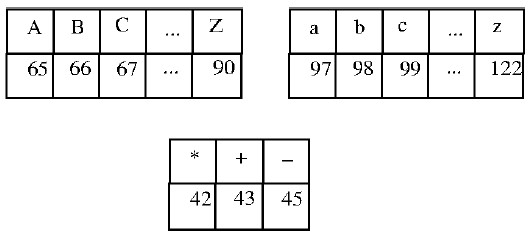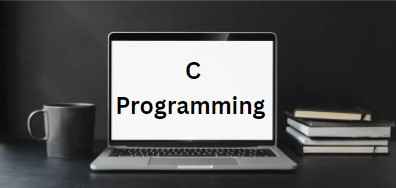C Programming GATE Question Answers with Explanation.
Q1 – What is printed by the following ANSI C program? (GATE 2022)
#include<stdio.h>
int main(int argc, char *argv[])
{
int x = 1, z[2] = {10, 11};
int *p = NULL;
p = &x;
*p = 10;
p = &z[1];
*(&z[0] + 1) += 3;
printf(“%d, %d, %d\n”, x, z[0], z[1]);
return 0;
}
1, 10, 11
1, 10, 14
10, 14, 11
10, 10, 14
Ans – (4)
Explanation –
Let’s break down the code step by step:
1. `int x = 1, z[2] = {10, 11};` initializes an integer variable `x` with the value 1 and an array `z` with values {10, 11}.
2. `int *p = NULL;` declares a pointer `p` and sets it to `NULL`.
3. `p = &x;` assigns the address of `x` to the pointer `p`.
4. `*p = 10;` modifies the value at the memory location pointed to by `p` (which is `x`) to 10. So, `x` becomes 10.
5. `p = &z[1];` now `p` points to the second element of array `z`.
6. `*(&z[0] + 1) += 3;` accesses the first element of array `z` through pointer arithmetic (`&z[0] + 1` moves to the second element), adds 3 to it. So, `z[1]` becomes 14.
7. `printf(“%d, %d, %d\n”, x, z[0], z[1]);` prints the values of `x`, `z[0]`, and `z[1]`.
Let’s analyze the final values:
– `x` has been modified indirectly through the pointer `p` earlier, so it is 10.
– `z[0]` remains unchanged, so it is 10.
– `z[1]` has been modified to 14.
Therefore, the correct output will be:
(4) 10, 10, 14
Q2 – What is printed by the following ANSI C program? (GATE 2022)
#include<stdio.h>
int main(int argc, char *argv[])
{
int a[3][3][3] = {{ 1, 2, 3, 4, 5, 6, 7, 8, 9},
{10, 11, 12, 13, 14, 15, 16, 17, 18},
{19, 20, 21, 22, 23, 24, 25, 26, 27}};
int i = 0, j = 0, k = 0;
for( i = 0; i < 3; i++ ){
for(k = 0; k < 3; k++ )
printf(“%d “, a[i][j][k]);
printf(“\n”);
}
return 0;
}
1. 1 2 3
10 11 12
19 20 21
2. 1 4 7
10 13 16
19 22 25
3. 1 2 3
4 5 6
7 8 9
4. 1 2 3
13 14 15
25 26 27
Ans – (1)
Explanation –
The program prints the elements of the 3D array a in a specific format. Let’s evaluate the output:
i is used to iterate over the first dimension (2D array).
j is fixed at 0.
k is used to iterate over the third dimension (individual elements in each row).
The correct output is (1)
1 2 3
10 11 12
19 20 21
Q3 – What is printed by the following ANSI C program? (GATE 2022)
#include<stdio.h>
int main(int argc, char *argv[]){
char a = ‘P’;
char b = ‘x’;
char c = (a & b) + ‘*’;
char d = (a | b) – ‘-‘;
char e = (a ^ b) + ‘+’;
printf(“%c %c %c\n”, c, d, e);
return 0;
}
ASCII encoding for relevant characters is given below

z K S
122 75 83
* – +
P x +
Ans – (1)
Explanation –
Let’s analyze the given C program
1. `c` is calculated as the bitwise AND of ‘P’ and ‘x’ (`(a & b)`) and then adds the ASCII value of ‘*’.
2. `d` is calculated as the bitwise OR of ‘P’ and ‘x’ (`(a | b)`) and then subtracts the ASCII value of ‘-‘.
3. `e` is calculated as the bitwise XOR of ‘P’ and ‘x’ (`(a ^ b)`) and then adds the ASCII value of ‘+’.
Now, let’s find the ASCII values:
– ‘P’ has an ASCII value of 80.
– ‘x’ has an ASCII value of 120.
Let’s calculate the values:
– c = (80 & 120) + ‘*’ => c = 80 + 42 => `c` is the character with ASCII value 122.
– d = (80 | 120) – ‘-‘ => d = 120 – 45 => `d` is the character with ASCII value 75.
– e = (80 ^ 120) + ‘+’ => e = 40 + 43 => `e` is the character with ASCII value 83.
Now, when you print these characters
printf(“%c %c %c\n”, c, d, e);
The output will be
z K S


